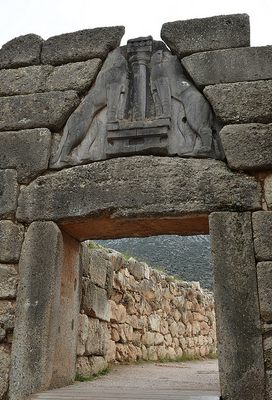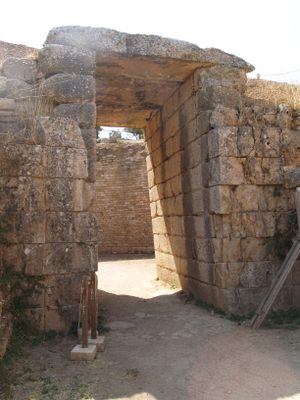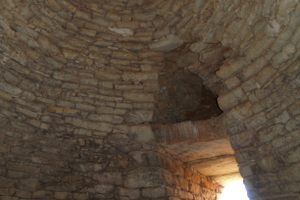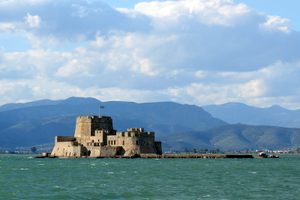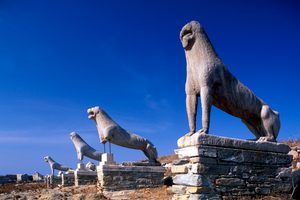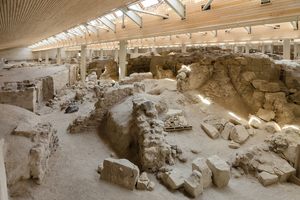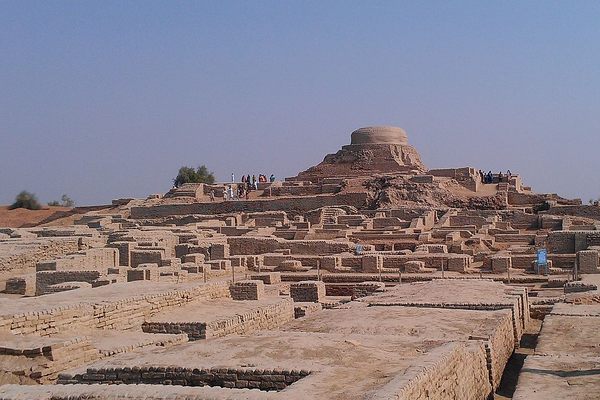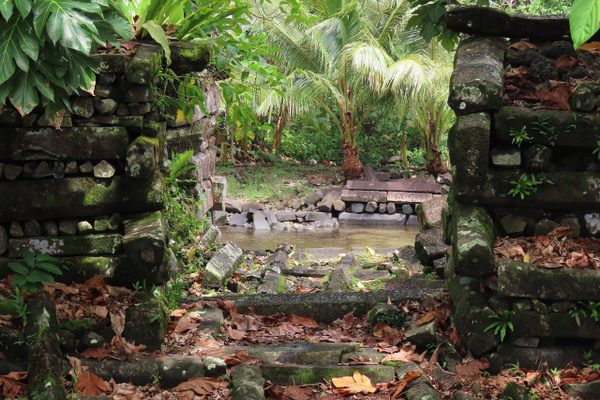About
On a hilltop among hilltops on the Peloponnesian peninsula in Greece, an ancient stillness pervades the poppy-strewn countryside and muffles the bells of nearby sheep with their shepherds. And yet the tour buses continuously rumble up to the ancient stone remnants of a great city. Stone lions gaze upward even as round tombs huddle deeper into the earth.
This is Mycenae, once the major power in the Bronze Age and Helladic Greece, controlling most of southern Greece and communicating with other trading centers as far away as Crete and Egypt, but no more than a tourist attraction since Roman times. This is the home of larger than life literary and mythological figures, from the hero Perseus to the bloody dynasty of the house of Atreus. Mycenae was also the kingdom of Agamemnon, who pursued his brother's wayward bride (and the riches she hid among) to the far shores of Troy. Ill winds at the outset of the Greek army's journey persuaded the king to sacrifice his own daughter to gain godly favor and precipitated an equally bloody chain of events upon his return home 10 years later. His vengeful wife Clytemnestra and her lover killed Agamemnon in the bath, the writer Aeschylus says in his Oresteia trilogy, which in turn led Agamemnon and Clytemnestra's son Orestes to seek revenge for his father.
When amateur archaeologist Heinrich Schliemann, fresh from his excavations at Troy, came to Mycenae in 1874, he began a large, systematic excavation and maintained his zeal for finding evidence of his beloved Homeric epics. Excavations uncovered a plethora of shaft graves, many of which contained a wealth of grave goods, including weapons, jewels, and beaten gold death masks. Despite the date of these tombs being quite a bit earlier than the layer of Troy he believed to be in contact with the Mycenaeans, Schliemann famously said upon finding the golden mask of a particularly serious bearded man, "I have gazed upon the face of Agamemnon." The mask has retained this moniker and is on view at the National Archaeological Museum in Athens, along with other finds from the site.
Perhaps the most famous feature of the site is the set of beehive tombs (tholoi). The tholoi marked a transition in burial practices from the earlier shaft graves and, while their grand nature implies the presence of important individuals, their visibility also made them easy prey for looters, and little was found within them.
Also of note are the slippery stone steps that lead down into the hillside to the long-filled-in remnants of an ancient cistern. Fed by a spring outside the city walls, the secret cistern gave the Mycenaeans access to water even if the city came under siege.
Although Schleimann harbored a romantic hope of finding his beloved Homeric heroes in the remnants of Mycenae, the wealthy residents of the shaft graves predate even the cyclopean walls of Mycenae's citadel. However, if we allow that the characters in the works of Homer and other poets are not rooted in a concrete timeline, but are echoes of earlier figures and events that were so important that they were passed on through the ages in the collective memory of the ancient Greeks, it is easy to believe that we have gazed upon the face of Agamemnon as well.
Related Tags
Community Contributors
Added By
Published
December 18, 2013
